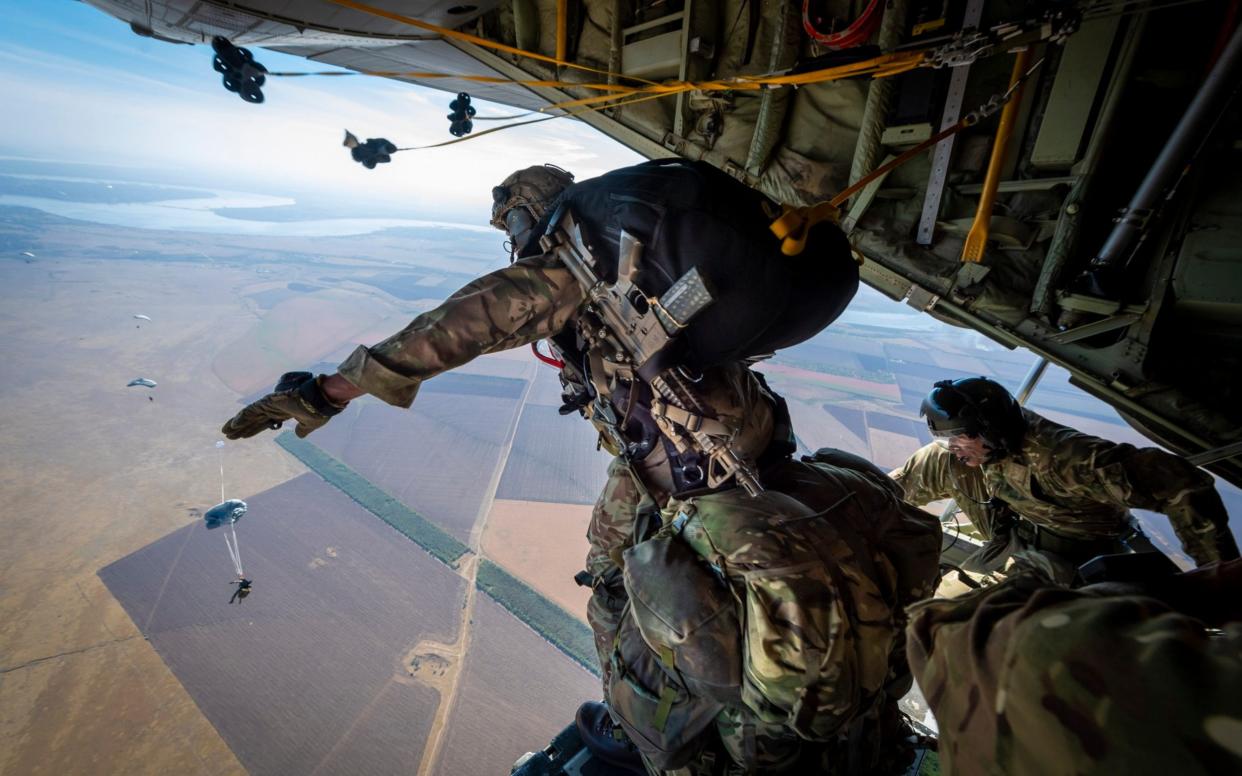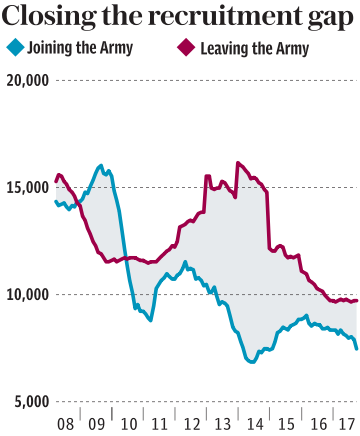British Army's diversity drive could mean it struggles to recruit enough soldiers

- Oops!Something went wrong.Please try again later.
The British Army's drive for diversity could mean it struggles to recruit enough soldiers, the director of the National Army Museum (NAM) has warned.
Justin Maciejewski, director general of the NAM who commanded troops in Iraq, said it was imperative that the armed forces did not lose sight of its “core workforce” by focusing too heavily on recruiting candidates from different backgrounds.
He said: "I think that in this period where diversity and inclusion has become such an important priority that has also spilled over into recruiting.
"I think this is obviously important, you know everyone wants to have a diverse and inclusive workforce but sometimes, if you lose sight of your core constituency in that process, you will also struggle to find the numbers.”
Mr Maciejewski said while “in the modern world” the army needs to “focus on recruiting a diverse workforce”, it should also be “very mindful of who historically has provided the bulk of the people for the army”.
Recap: Army to shrink under new defence plans
"[Which is] of course what we would have called in the old days working class families from right across the country whose sons and daughters have joined the army,” he told Jeremy Paxman on The Lock In podcast.
"Sometimes we under focus on those core groups at the expense of others and I think that combined with outsourcing recruiting has probably caused the army quite a lot of challenges recently. "
Previous reports have documented the challenge the army faces with recruitment. In 2018 a National Audit Office Report found half of would-be soldiers dropped out of the recruitment process because it was taking up to a year. Meanwhile, in a letter to troops last year, General Sir Nick Carter, the chief of the defence staff, said greater diversity was required within the Armed Forces in the wake of the Black Lives Matter movement.
Mr Maciejewski added that “the army has always struggled to recruit” and went on to say that the current size of the British Army, which is to be reduced to 72,500 soldiers by 2025 making it the smallest size Britain has had in more than 300 years, “pushes the bounds of credibility”.
The reduction in troops was announced as part of the Ministry of Defence’s command paper, which showed a pivot towards cyber warfare, space and robotics in order to fight "future wars".

He continued: "These numbers are really small and for a country that wants to be on the security council it is a very small army.
"I would say in terms of size, as a historian and a veteran and speaking very much in a personal capacity, it is verging on, it pushes the bounds of credibility."
He said that while the high standards of training within the forces made up for its limited size in some respects, he still believed more recruitment was crucial.
He added: "I do think the smaller the army becomes the less visible it is.”
Tobias Ellwood, chairman of the defence select committee, said: “There are bonds between military and community that date back centuries which will be lost if garrisons are closed down, many of which are in areas where it is the military that offers such enormous prospect for employment. Recruitment is already a challenge and we will lose important connectivity if the army continues to shrink further.”
A MOD spokesperson said: “Recruits from a wide variety of backgrounds are represented in the Armed Forces and we continue to promote the benefits of a service career to all walks of life.
“With £24 billion investment over the next four years, the Armed Forces will be modernised to meet future threats. We are spending billions to re-organise, re-skill and re-equip our soldiers as a high-tech force fit for the threats of the future not battles of the past.”
Watch: Why do we still have a gender pay gap?

